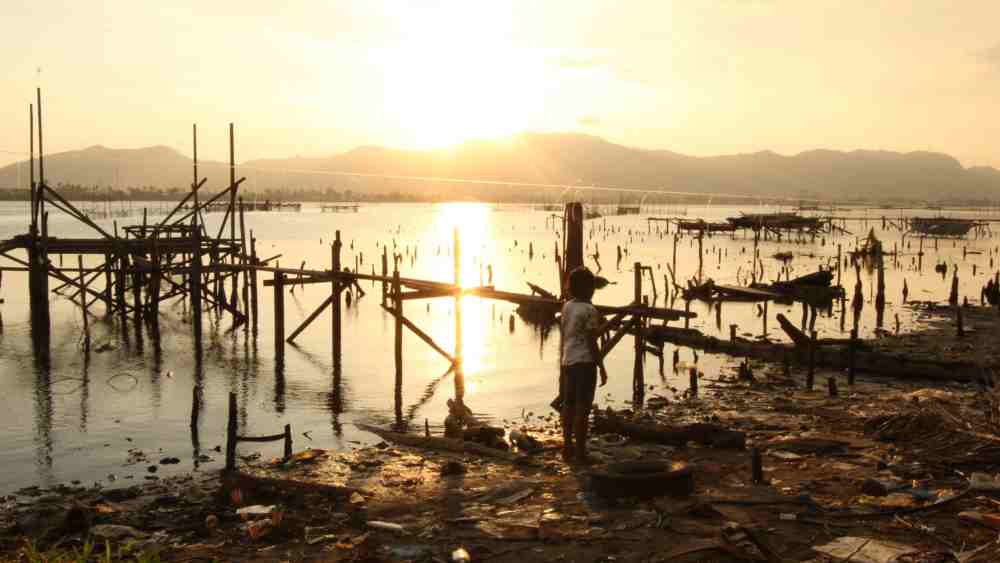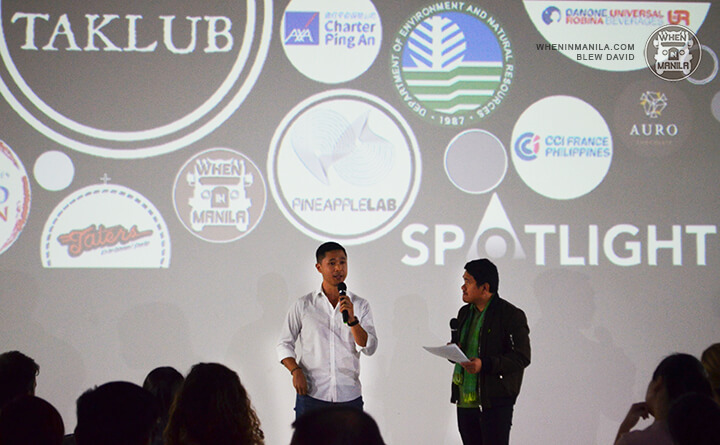
If Alipio, through the narrative of Taklub, showed the post-Haiyan scenario or what the survivors had to go through after the devastation, my discussion with Oscar Lizardo, external affairs officer of NOAH Center, is more on preparedness and the use of science and research in doing so.
NOAH stands for Nationwide Operation Assessment of Hazards. NOAH works to raise Filipinos’ awareness of natural hazards. It believes that an increased awareness of disaster risk is key in cultivating a culture of preparedness and reducing the catastrophic impacts of extreme hazard events. NOAH Center is housed at University of the Philippines. It conducts advanced science research and multi-ciplinary assessment of hazards. The results of which are used as tools by the government, community leaders, and families to prevent disaster.

Oscar Lizardo of NOAH says vulnerability and preparedness are factors why natural hazards turn into disasters
First, Lizardo says there should be a shift of mindset among Filipinos, who tend to equate typhoons with disasters. He cites, “The general mindset is that when the typhoon comes, automatically, a disaster will happen”. According to him, natural hazards such as tropical cyclones and earthquakes are not the main driver of disasters, but are only some of its elements.
“It is more of a developmental problem. You notice that when a disaster strikes, it is always the most vulnerable groups that are affected. For instance, during Ondoy, people living in slums were the ones hit badly. The same thing with recovery, if you’re not among the vulnerable groups, it is easy to recover. It’s a matter of vulnerability. We need to improve the socio-economic conditions of communities,” said Lizardo.
To further prove his point, Lizardo compares Japan and the Philippines, which geographically have the same problem when it comes to natural hazards or exposure to it. “But in terms of risks or proneness to disasters, we are number three. Japan is not even on top 15. that is because they are highly prepared; they made the necessary engineering interventions; their people are aware and there is a culture of preparedness in Japan. All those contributed to the low risks of disasters,” he pointed out.
The good news, he said, is that Filipinos are more knowledgeable now. We are using technology to prepare because there is really no technology (yet) to stop earthquakes or typhoons. We can only use technology to simulate future scenarios in order to prepare communities for impending hazards.
As NOAH is doing, it is developing hazard maps that indicate the hazards in certain areas. These are useful in planning ahead in order to better prepare communities to cope with flooding that will happen in the future, for example. “The main message is if communities are away from harm, there will be fewer disasters.” That’s the bottomline for Lizardo.
In the movie Taklub, Ecclesiastes 3:1-6 was quoted. That there a time to tear down and a time to build…a time to weep and a time to laugh, a time to mourn and a time to dance…a time to search and a time to give up.”
In our fight against the adverse effects of climate change, there is no time to give up. There is only a time to act, which is now or never.




